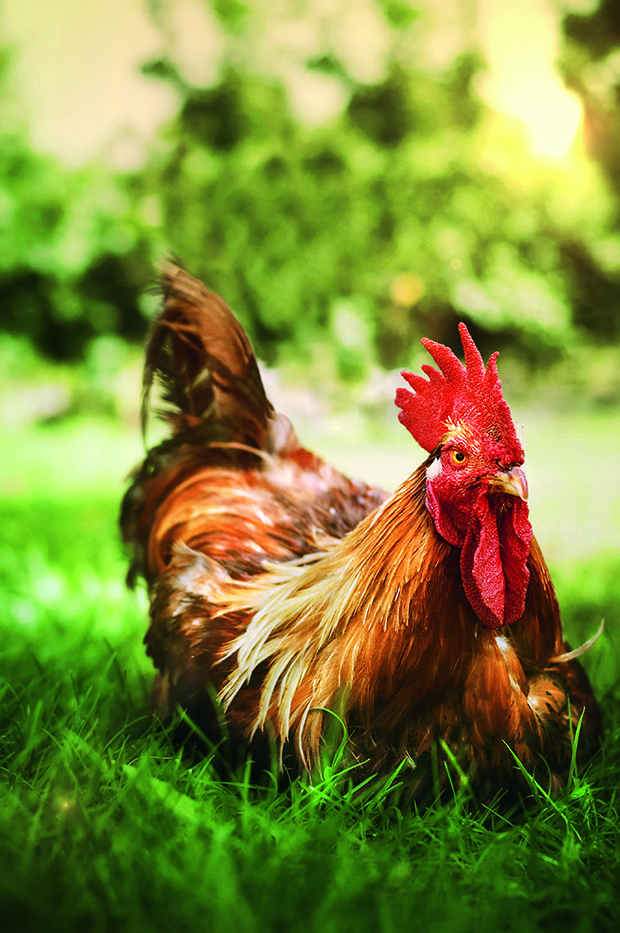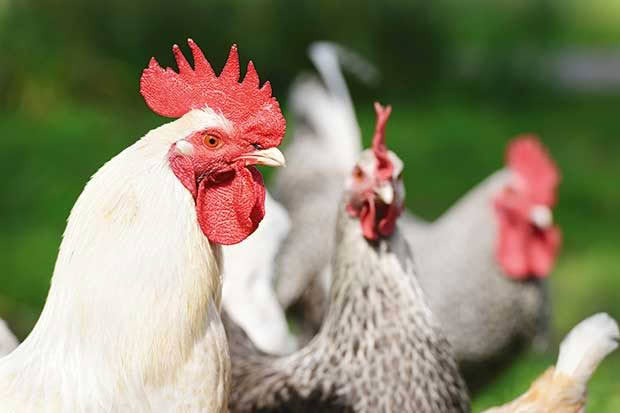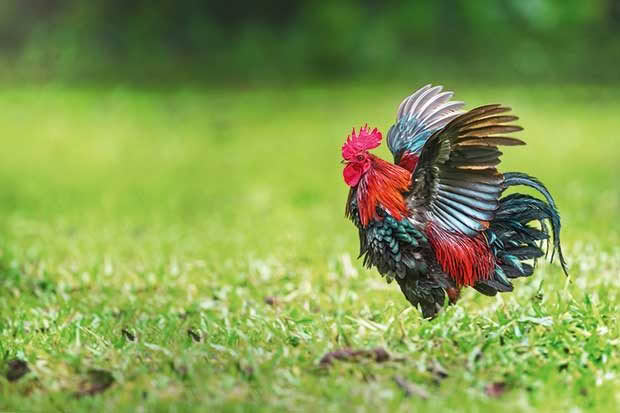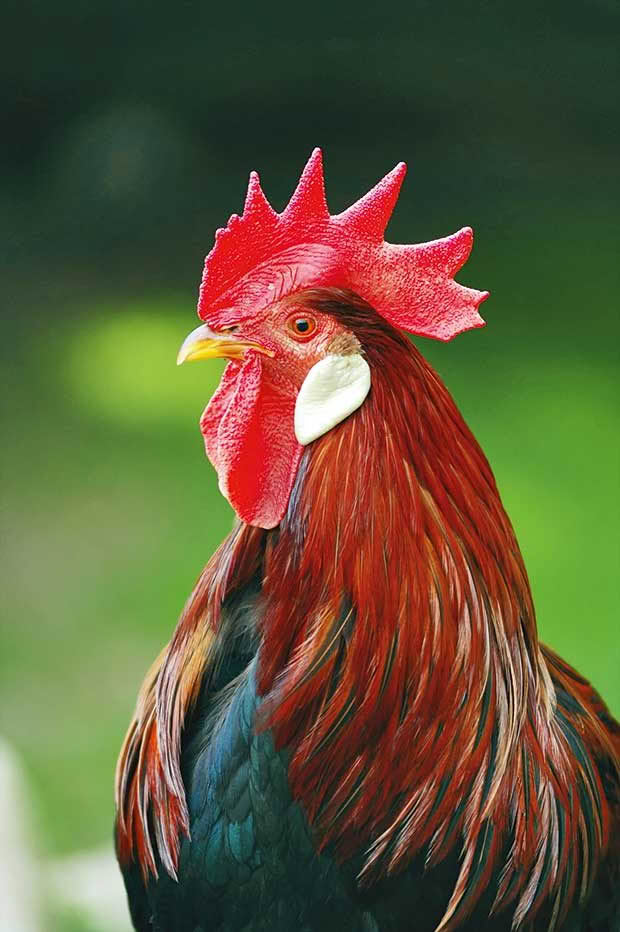Roosters 101: How to manage behaviour of the king of the coop

Roosters are the most beautiful of the poultry world, but they are the most trouble too.
Words: Sue Clarke & Nadene Hall
Roosters can be a problem. If they’re not crowing at 4am, they can be aggressive, especially if you have several of them in your flock. Worse, they can turn their ire on you, and each other.
Strategies to manage rooster behaviour depend on the breed, their age, and the rooster-to-hen ratio of your flock.
Aggressive behaviour in roosters (and other livestock) is influenced by:
• learned behaviour
• genetics
• their current environment
A rooster’s role in life is to mate with as many females as possible, but mostly it’s a small group he keeps as his ‘harem’. He’s their guardian, sounding warnings when predators like hawks or cats are around. He will also help ‘his’ hens find food.
A flock has a set ‘pecking order’ where birds fight to find who is higher and who is lower. The lead rooster must show dominant behaviour to other roosters to maintain his top status.

Fighting among male birds is usually intense, and roosters are more likely than females or young birds to keep fighting until one kills the other.
Unfortunately, they can also turn their aggression on their owners. Aggressive behaviour is more prevalent in spring when hens are coming back into lay and younger roosters are seeking to build their own harem.
Several roosters can be run with a flock of hens. The key to successful management is to keep the ideal ratio of hens to each rooster. A heavy breed rooster (eg, Orpington, Barred Rock) can manage 8-10 hens. A light breed (eg, Leghorn, bantams) can cope with 10-15 hens.
If there are more roosters and fewer hens, the roosters will fight each other to gain more hens.

Alternatively, if there are too many hens for the resident roosters to cope with, they may become ‘hen-pecked’. They will continue mating until they are too tired, and lose weight and condition. This lowers their fertility.
If you want to keep multiple breeding males, and mate them with specific hens or place them in your flock at key times, keep them in individual runs and only bring them out when needed.
If you do have to keep groups of adult males, make sure they have a spacious run, to reduce the risk of fighting.
WHO IS YOUR BOSS ROOSTER?
This may involve getting up at a very early hour to observe, or (easier) use a camera. The first rooster to crow each morning is always the dominant male. Roosters then crow in order of seniority. Remove the dominant rooster and the second-in-command takes over the crowing order (and the flock).
A good dominant rooster will spend about 70 percent of his time looking out for his harem, watching for predators and interference from other roosters. Research shows they are also good providers, leading hens to the best food.
3 THINGS THAT STUNT A ROOSTER’S FERTILITY
• roosters deprived of water for 48 hours will have lower semen production for up to six weeks.
• high iodine intake (more than 5000ppm) causes a reduction in sperm quality.
• eating mouldy food can cause lower sperm quality.
ROOSTER BEHAVIOUR
In the wild
A wild flock is made up of a dominant rooster, and a harem of a dozen or so females. Nearby will be a group of males of different ages (as 50% of eggs that hatch are males). Most of the time these birds get along peaceably.
The subordinate and younger males will live on the fringes of the harem. Among them will be roosters that have never developed and remain infertile; they tend to be accepted as they don’t challenge the more dominant roosters.
These roosters are always looking for an opportunity. There will be continual bids to take over the hens. There is rape, robbery, and the occasional murder.
Every day, the dominant rooster will escort a hen to a suitable nesting site, wait until she has laid, then escort her back to the flock. He will also escort the flock as it moves to roost at night. The fringe males use these times to take advantage of the dominant rooster’s distraction to try to mate with ‘his’ hens.
In a large commercial breeding flock
Commercial breeders run several thousand hens in a large shed. Among them will be several hundred males.
However, even in this artificial environment, there will still be hundreds of small harems, presided over by a head rooster. Even though the area is completely open, the hens all know their place and rarely stray away from their group.

Hens will remain faithful to their rooster, even if he becomes infertile, lame or ill and is unable to mate with her. Breeders must be vigilant in spotting inactive roosters and remove them so the hens find a fertile mate.
Part-way through the breeding season for meat-producing birds, a second team of young, fit roosters is brought in. Any non-performing roosters are removed; older roosters that remain are stimulated to be more enthusiastic by challenges from the younger males.
MORE HERE:
Love this story? Subscribe now!
 This article first appeared in NZ Lifestyle Block Magazine.
This article first appeared in NZ Lifestyle Block Magazine.
